What is this style?
The japandi style takes its name from a mixture of two definitions: japan and scandi. It is also a symbiosis and a logical continuation of the two listed areas.
Japanese style restraint and striving for simplicity migrated to japandi. Of scandinavian style - practicality, minimalism. Another feature of japandi is the tendency to use natural materials, inherent in the Scandinavian style and Japanese.
For European and Russian interior design, this direction is a logical development of the Scandi philosophy: the design becomes less decorative, but more functional.
Japandi philosophy
The description of japandi in the interior is more likely not about visual characteristics, but a reflection of the inner state. The Japanese and Scandinavians know how to find beauty in imperfection (in hygge and wabi-sabi actually have a lot in common) tend to be minimalist aesthetics. It is these features that manifest themselves in the surrounding space:
- Love for simplicity... Neutral wall finishes, furniture, decor, textiles - none of the elements stand out. Just like the Japanese or Scandinavians are not used to standing out from the crowd.
- Lack of frills... It concerns not only the decor, but also the choice of colors, furniture: each item in the japandi interior has its own function.
- Cleanliness and tidiness... Two “bibles” of the organizers of the space - “Magic cleaning” by Japanese woman Marie Kondo and “Swedish cleaning” by Margareta Magnusson. Needless to say something else, knowing the craving of the Japanese and Scandinavians to decluttering and moderate consumption?
Based on the symbiosis of the Scandinavian and Japanese dispositions, one can distinguish common features: minimalism, neutral palette, handmade decor, furniture made from natural materials, upcycling, recycling.
What is the dominant color scheme?
The main color of scandi is white.diluted with warm shades. Classic Japanese is characterized by a love for deep, rich, but cold tones: sea wave, turquoise, indigo. Their japandi-style combination resulted in a love for complex colors: muted, dirty, but cozy.
The basis of the palette is considered neutral grey, beige, brown, although white is still found in "transitional" stages. Additionally, they use cold blue, green, pink tones: it can be colored wallpaper (Scion has a whole Japandi collection, including 32 options for prints and shades - see examples in the photo in the section "Finishing"), curtains, textiles.
An important nuance Japandi style interior design - creating contrasts. Light walls + dark floor, dark walls + light furniture, light background + black accents.
Which finish is right for you?
The combination of simplicity and naturalness can also be traced in the choice of finishing materials, methods of decorating walls, floors and ceilings.
Walls
Most popular option — painting... Monochrome surfaces are universal, functional - therefore, paint is used on most vertical partitions.Selected accent walls can be highlighted with suitable wallpapers, wooden slats, natural stone, ceramic tiles.
Ceiling
Classic: pure white, gray, black. The concrete ceiling will give a touch of industrialism: for this it is enough to remove the existing finish from it.
Floor
A win-win - wood. Natural, eco-friendly, durable, warm. For the kitchen or bathroom - practical tiles, preferably of a dark shade, simple texture.
What kind of furniture is best to choose?
Furniture in japandi is low in Japanese, comfortable in Scandinavian. Chairs, tables, as well as cabinet wardrobes, dressers, choose from natural wood: wood shade from light to dark.
Soft armchairs, sofas are also chosen with wooden inserts: small legs, armrests, other accessories add warmth to ordinary products. Sofas can even look like wooden benches with soft comfortable pillows.
Japandi fans have a special place in their hearts design items: IKEA is being replaced by unusual armchairs, chairs, tables, shelves from Asian and European designers. They are distinguished by laconic flowing forms, combinations of unusual textures, minimalistic design.
Recommendations for choosing lighting and decor
The decorative elements of japandi are the same as the rest of the environment: simple, laconic. There should not be many of them: one big picture is enough above the sofa or a set of 3 small items on the dresser.
Shine (pendants, chandeliers) is selected based on the tasks: lamps can be minimalistic, so as not to argue with the decor, or original design ones, in order to become an accent themselves.
Perfect home decoration - natural. Live plants, ceramic or earthenware, wooden figurines.
What textiles are used?
The philosophy of hygge involves the active use of textiles at home and the embodiment of the japandi style in the interior does not argue with this.
Curtains, rugs, carpets, pillows can be rich, deep colors, paying tribute to Japanese traditions. If you choose with prints, go for geometry or abstraction.
The second option is less contrasting: plain or non-contrasting fabrics of white, sandy, gray shades add comfort to any space.
How does it look in the interior of the rooms?
Decorating an apartment in the Japan + Scandi style involves rejecting everything superfluous and adopting the aesthetics of simplicity.
The kitchen is the only room where open storage... But on the shelves there should be beautiful dishes: cups, teapots, mortars, ceramic jars for storage.
In the living room, all furniture should be "underestimated": low coffee table assumes the installation of a sofa with a suitable low seat. Instead of tall shelving, elongated floor stands are better.
A japandi-style bedroom requires a low bed: the eastern standard for height from the floor is only 20-40 cm.
Japandi is a decoration that needs to be felt. It is primarily about comfort, a new standard of living and the rejection of all unnecessary things: if you are ready to let these principles into your life, pay attention to this style.


 10 practical tips for arranging a small kitchen in the country
10 practical tips for arranging a small kitchen in the country
 12 simple ideas for a small garden that will make it visually spacious
12 simple ideas for a small garden that will make it visually spacious
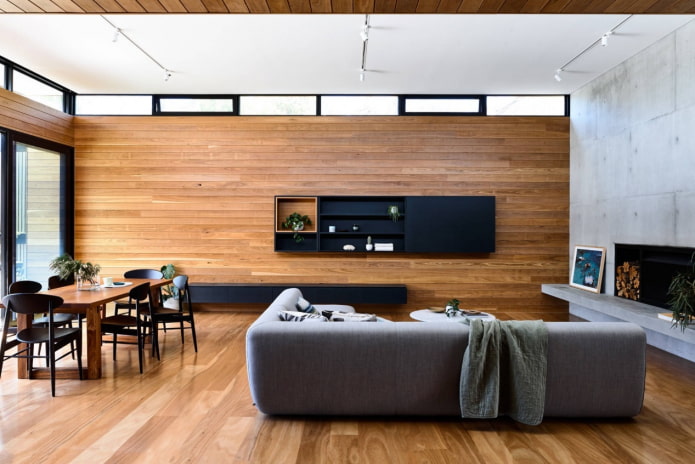
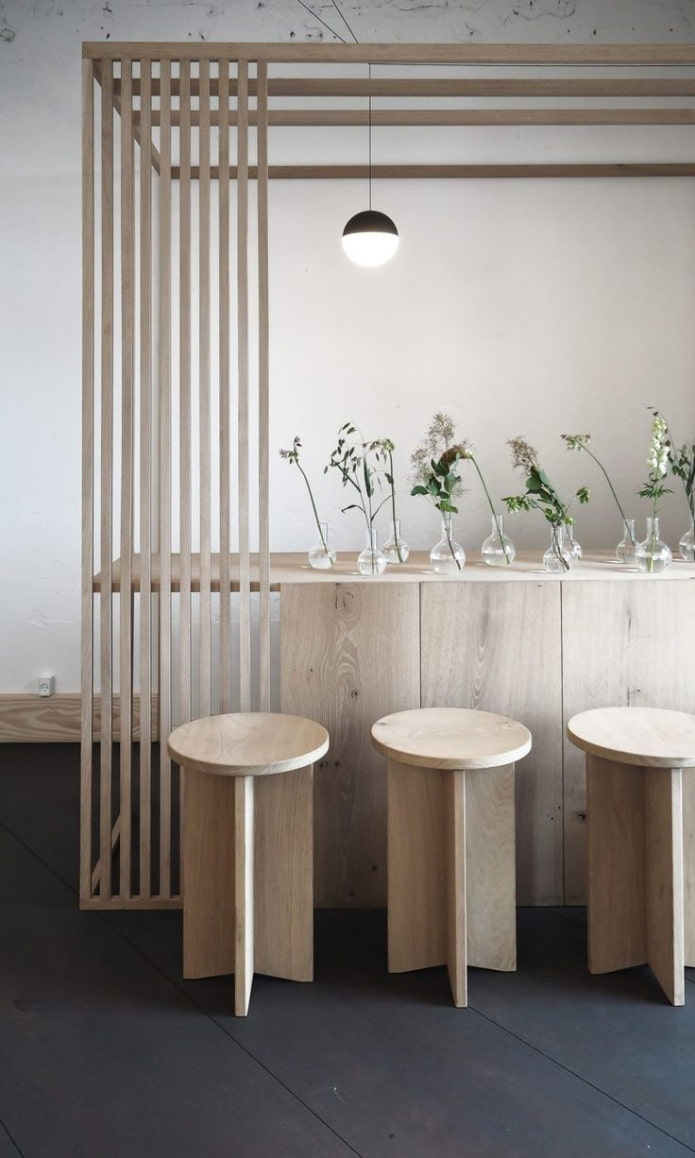
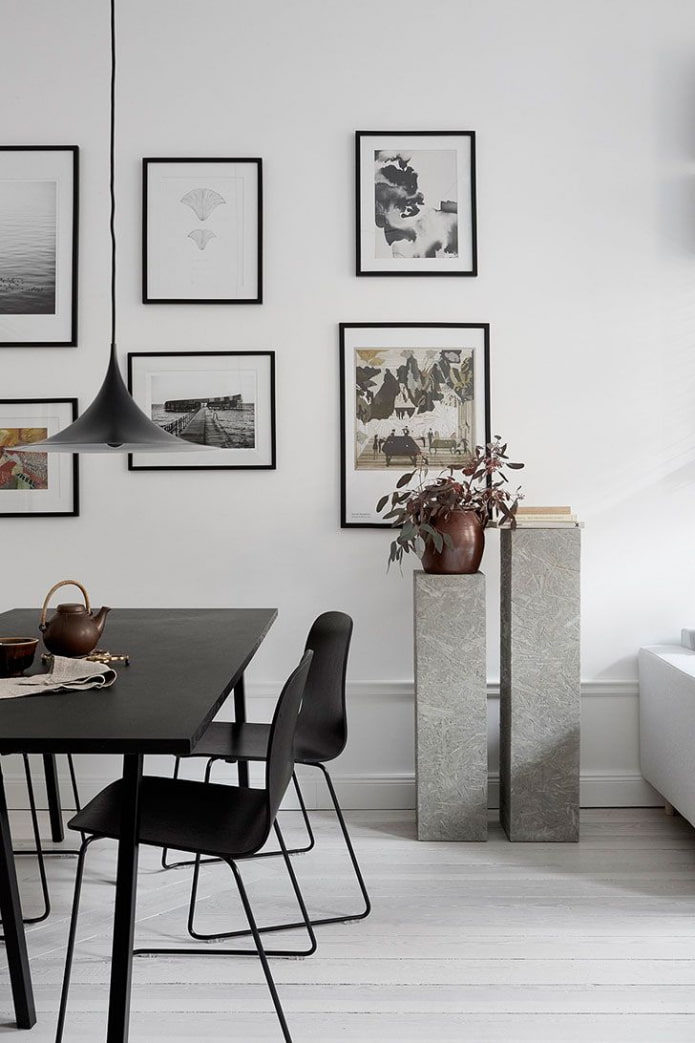
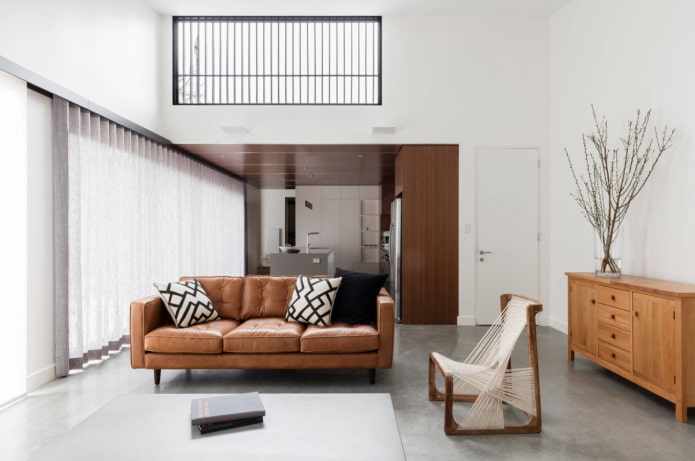
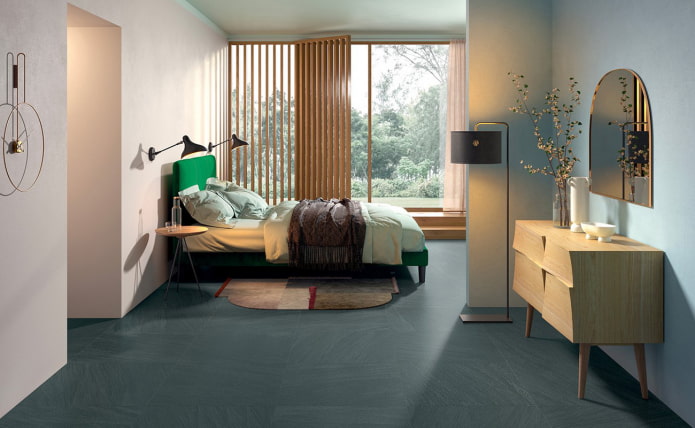
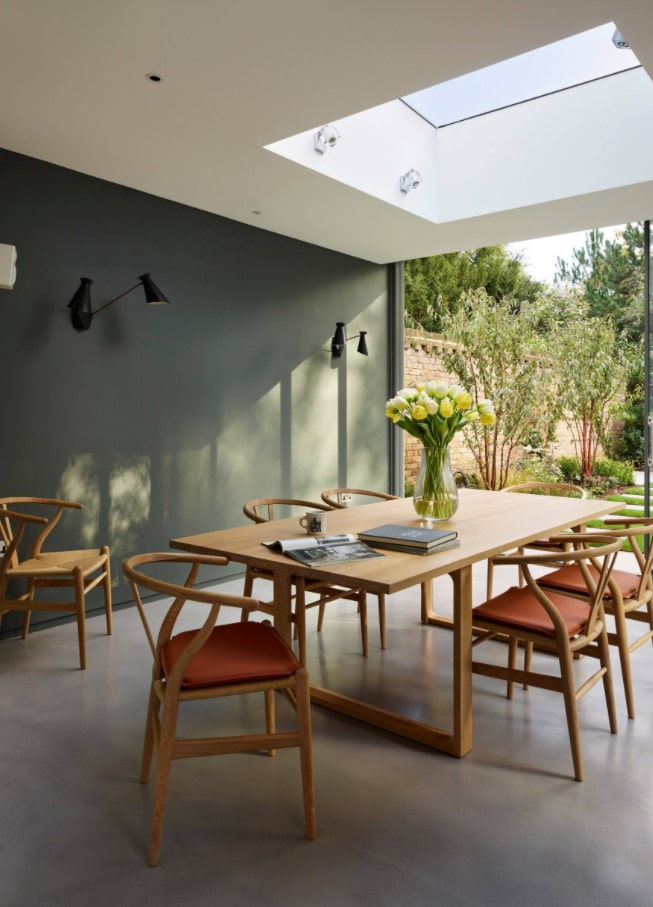
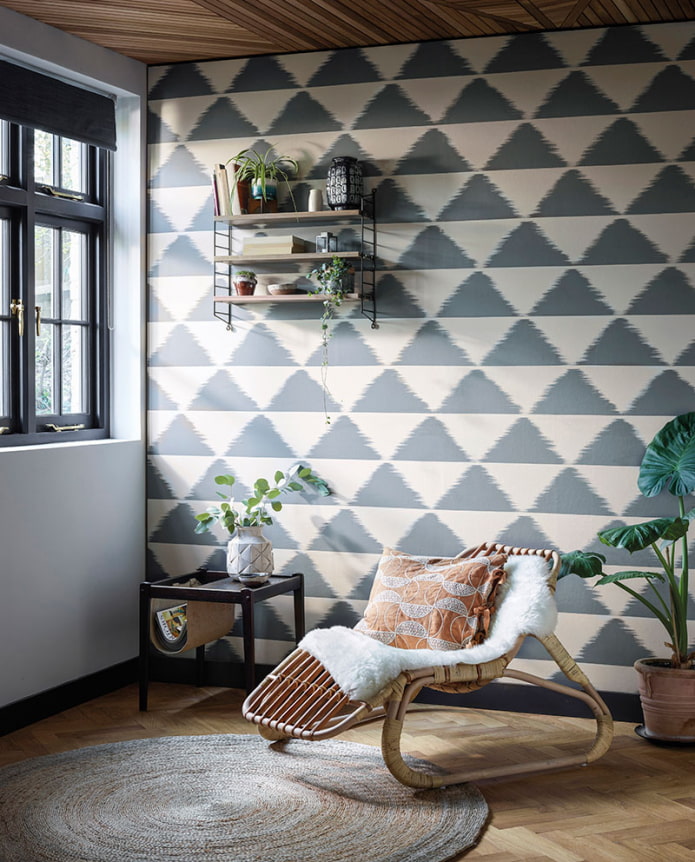
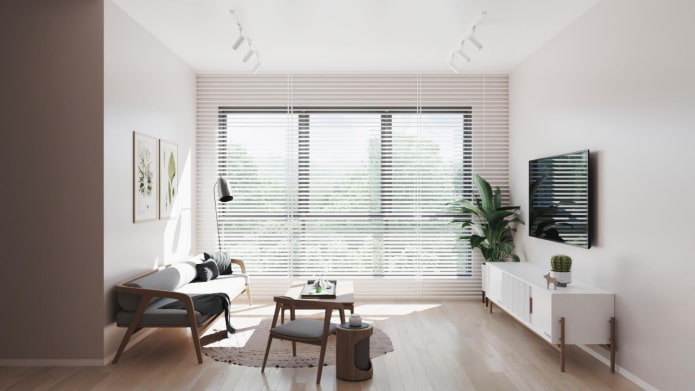

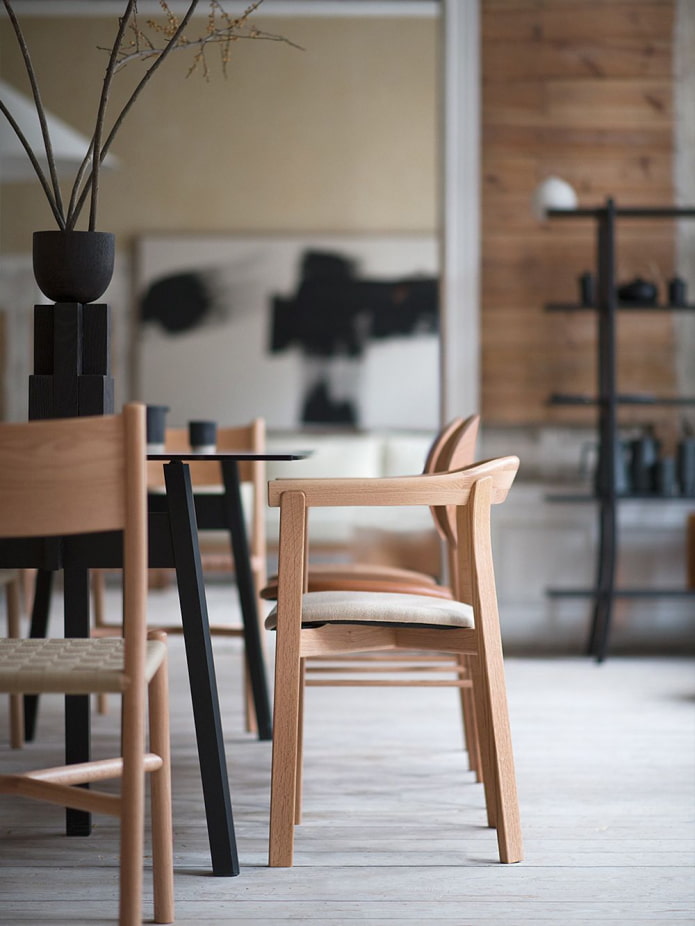

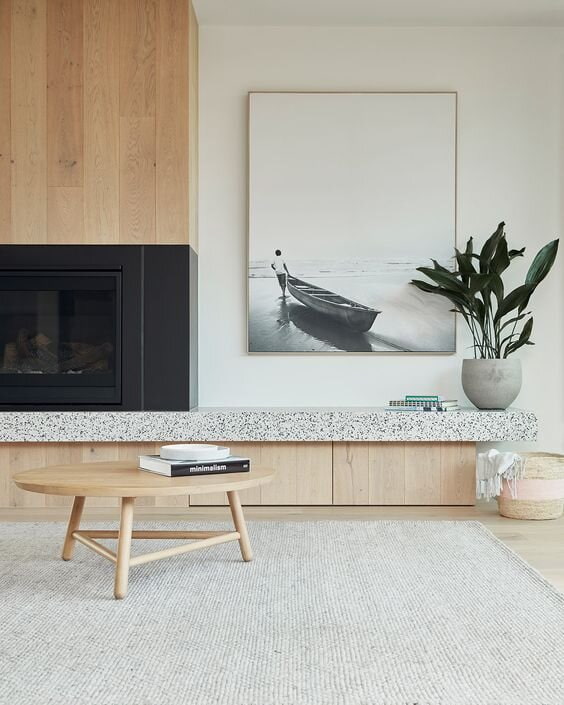
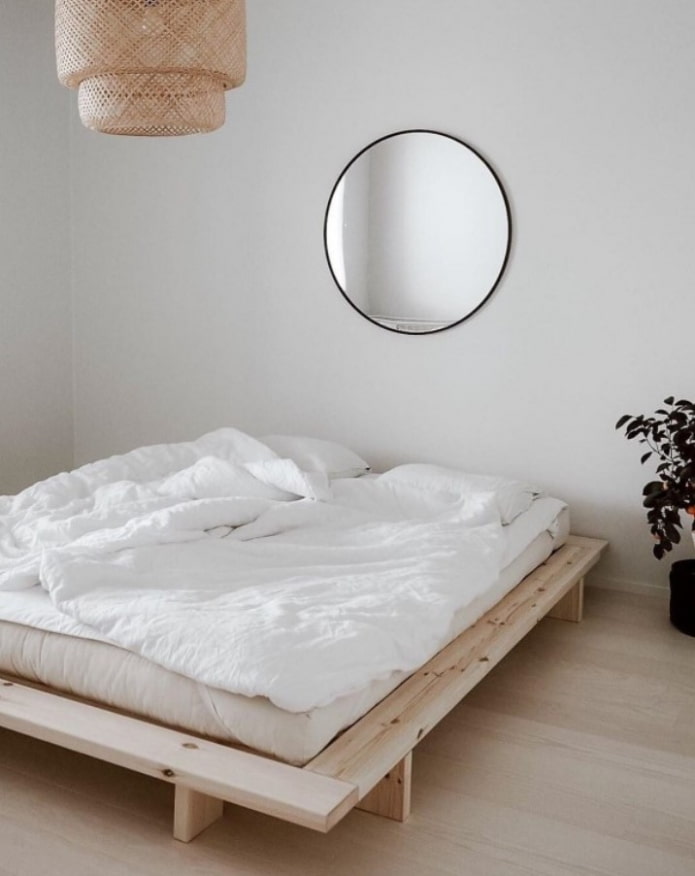
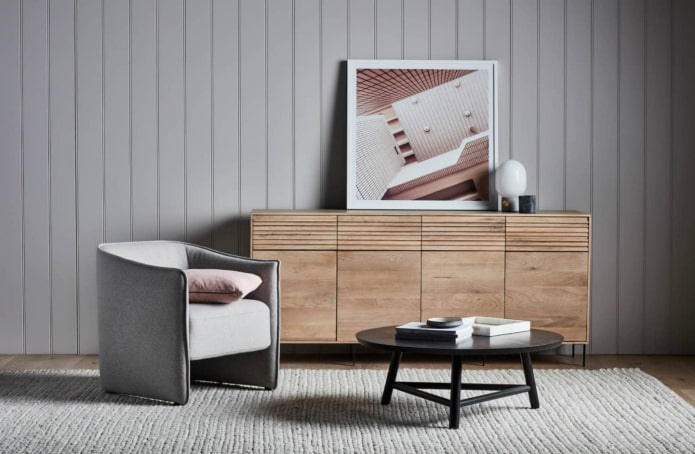
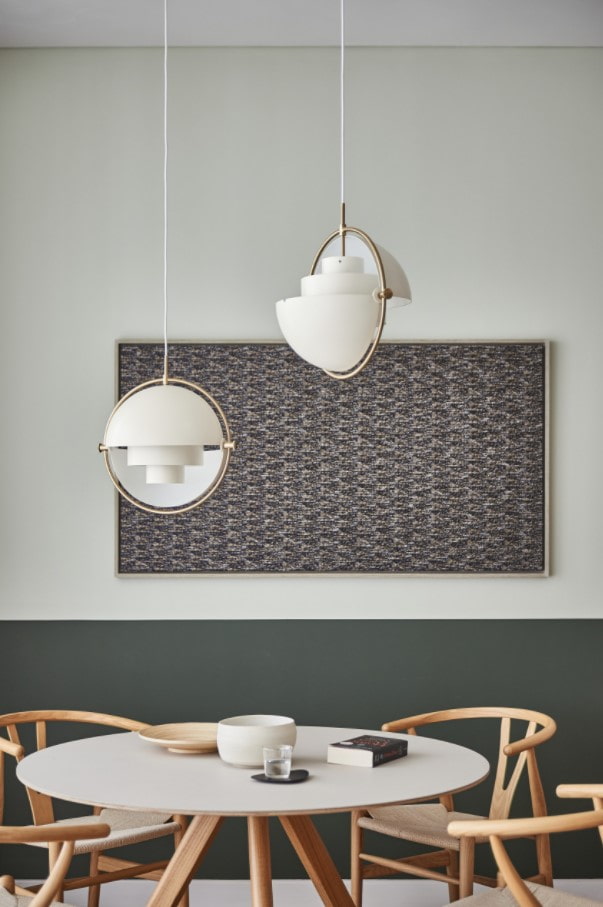
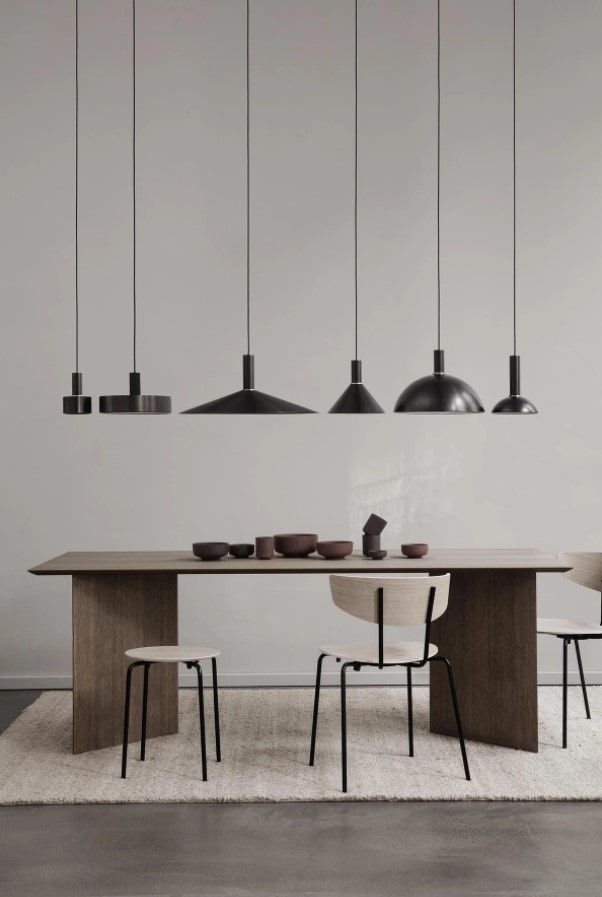
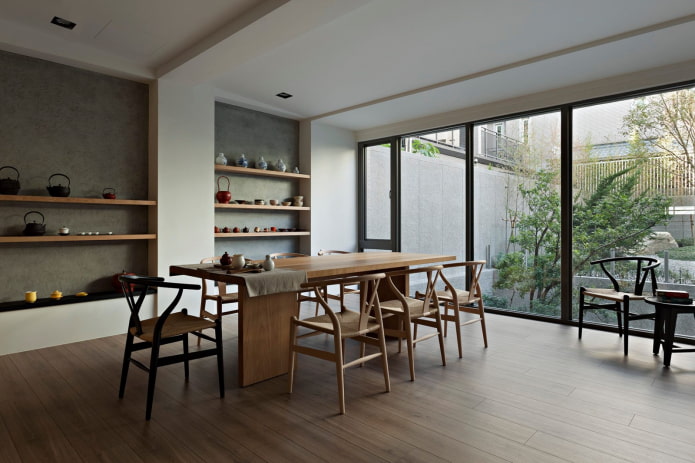
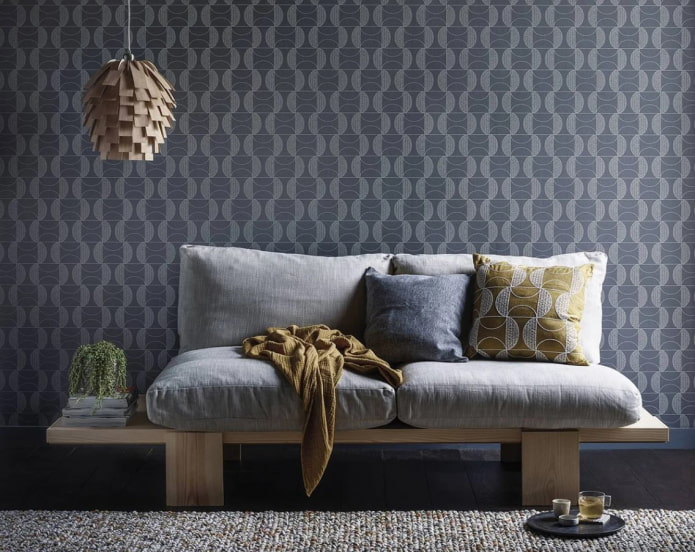
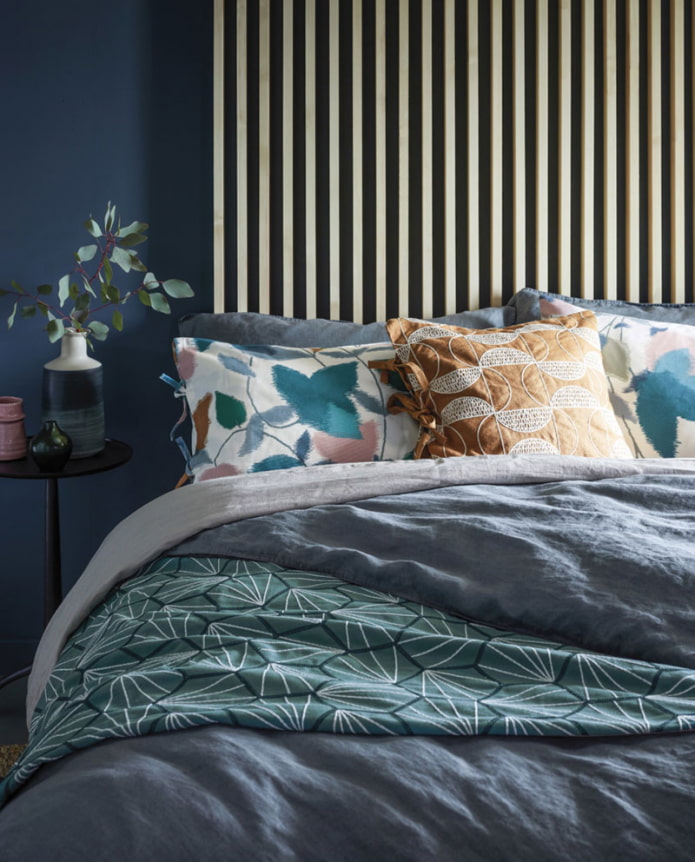
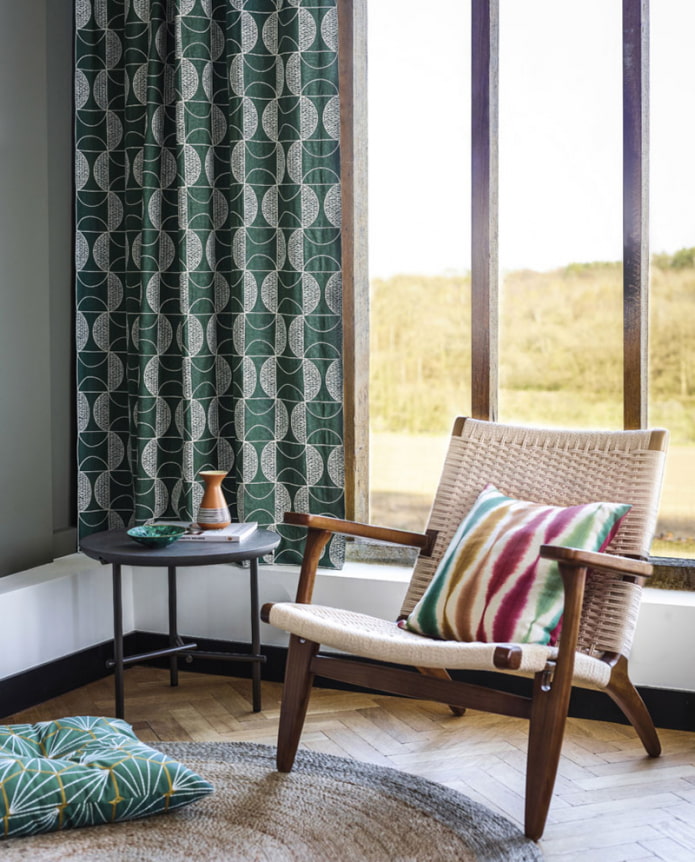

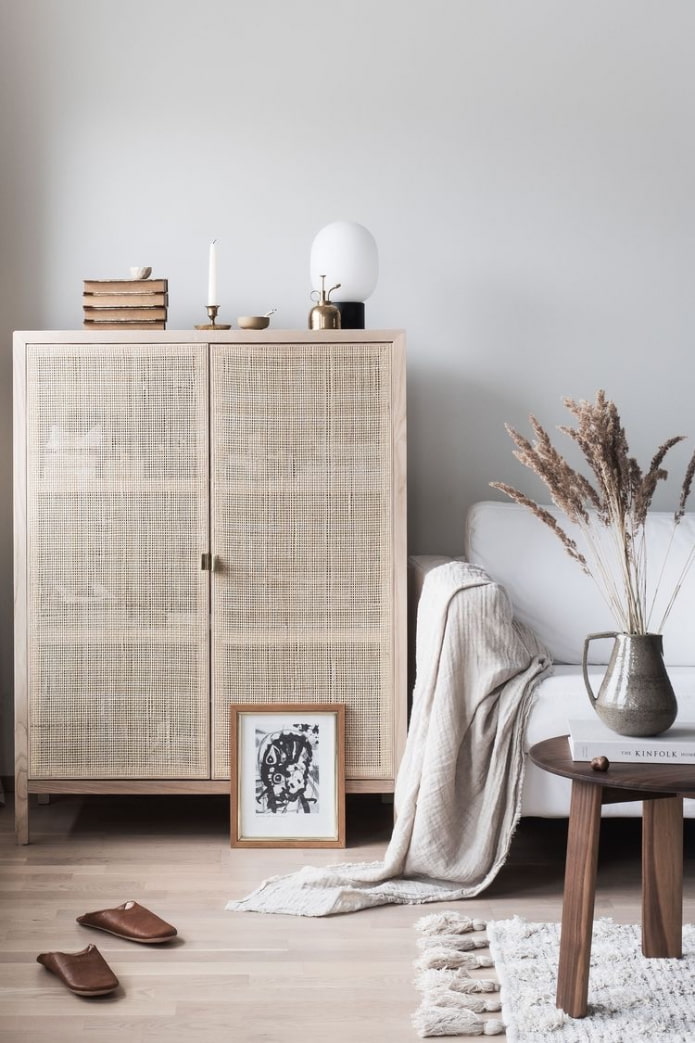

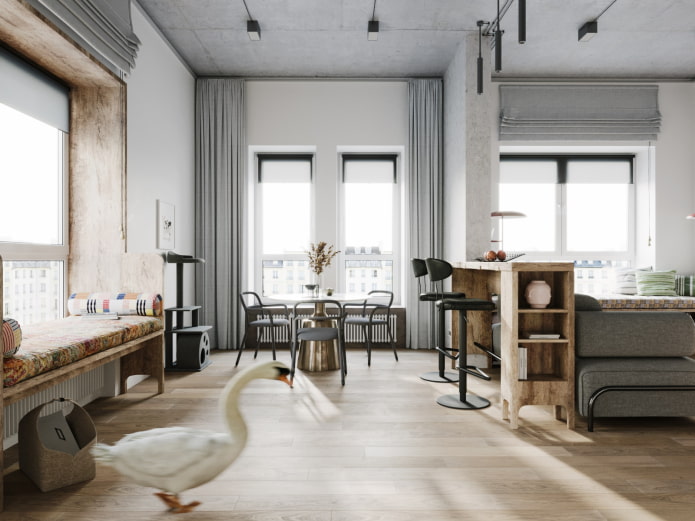
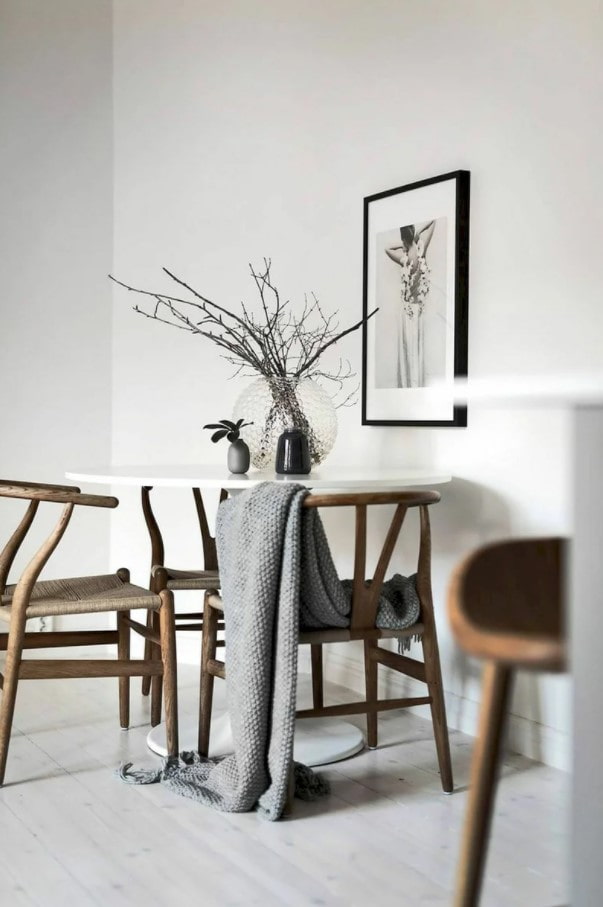
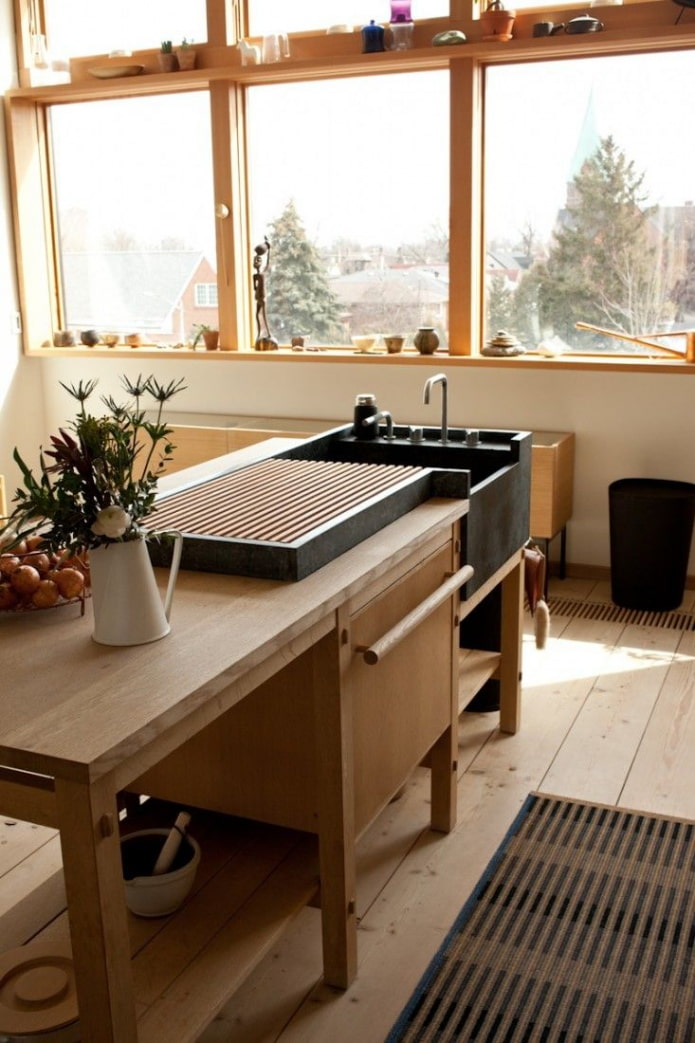
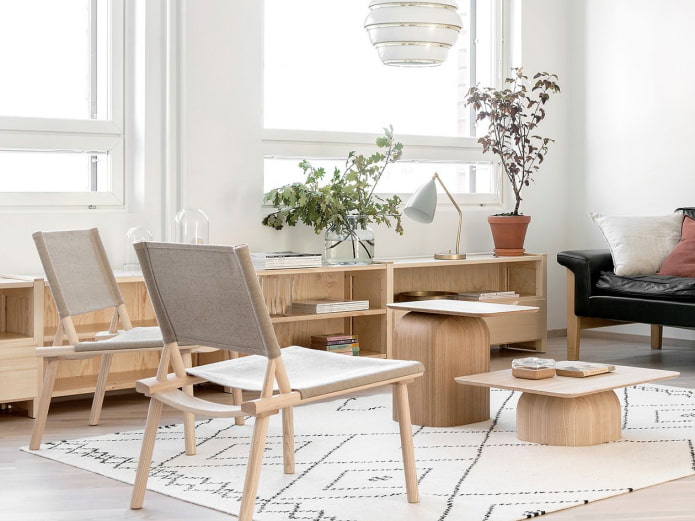
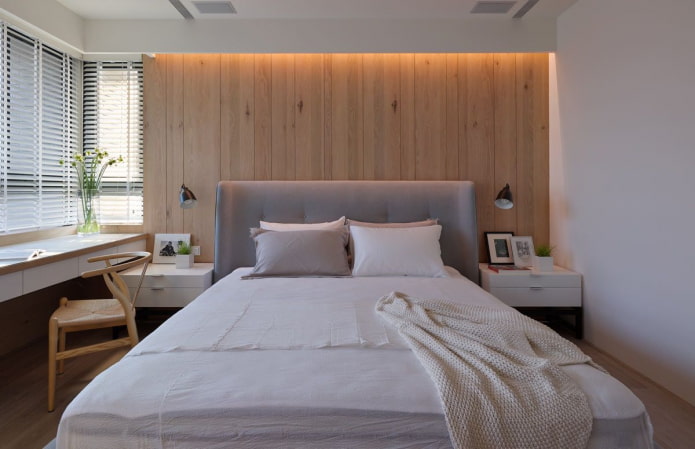
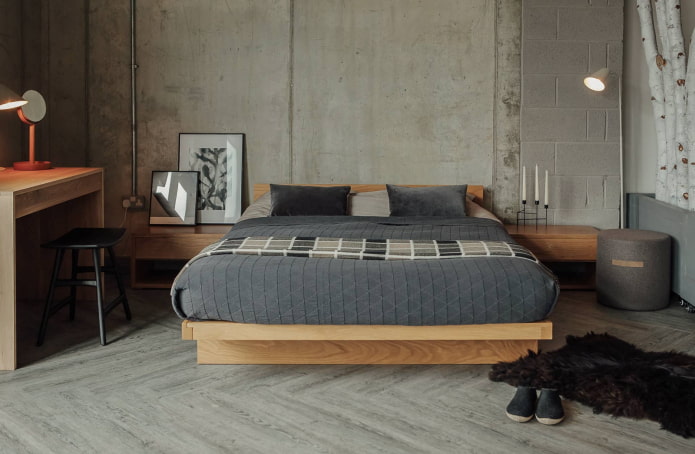
 13 bad habits a good housewife shouldn't have
13 bad habits a good housewife shouldn't have 24/7 home cleanliness - 4 secrets for the perfect housewife
24/7 home cleanliness - 4 secrets for the perfect housewife 6 hotels in Sochi that will give odds to the promoted foreign hotels
6 hotels in Sochi that will give odds to the promoted foreign hotels Top 10 interior design trends 2020
Top 10 interior design trends 2020 Rating of cheap TVs with Smart-TV
Rating of cheap TVs with Smart-TV New Year's LED garlands on AliExpress - we disassemble while it's hot, so that it's bright at home
New Year's LED garlands on AliExpress - we disassemble while it's hot, so that it's bright at home